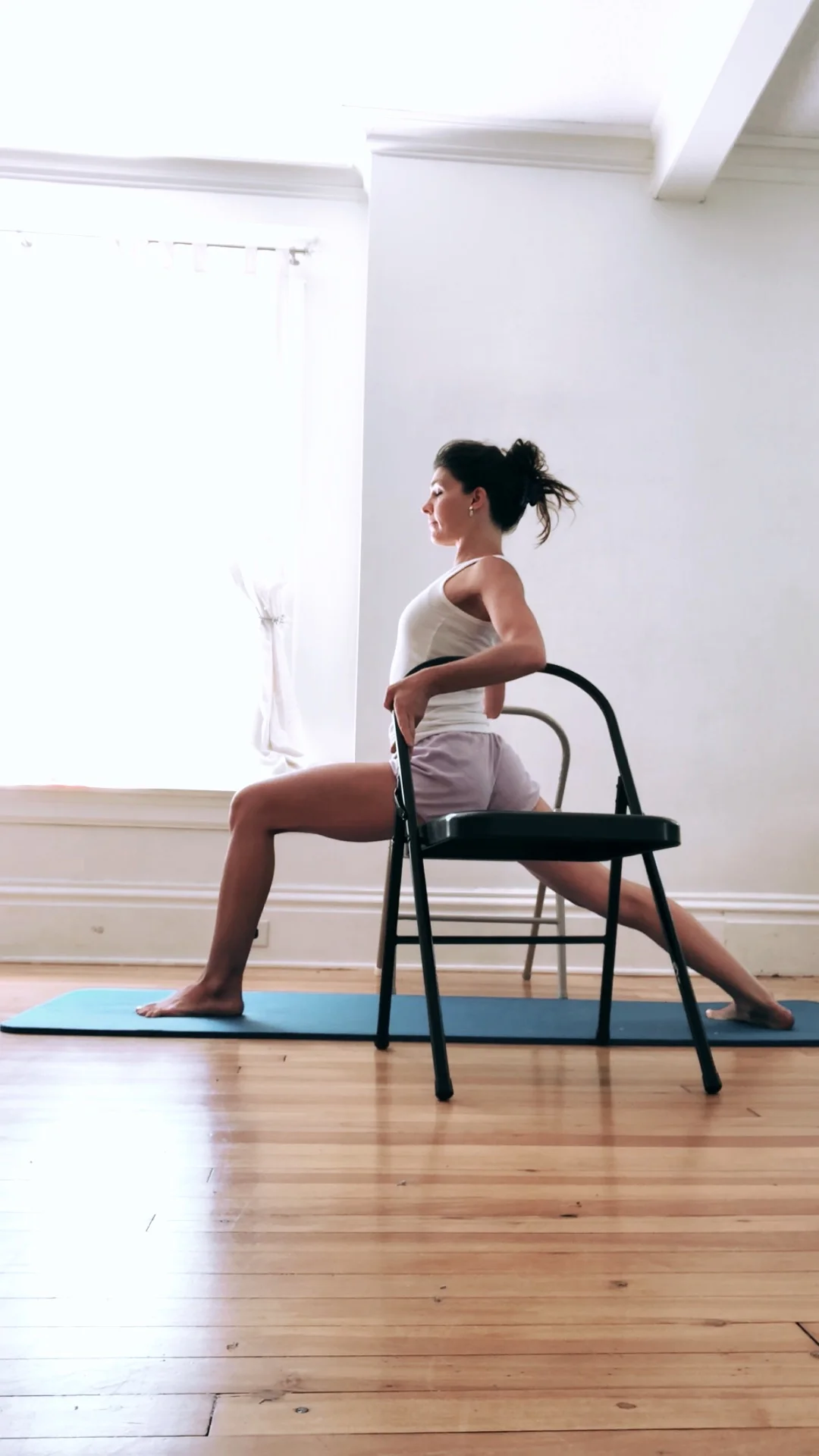“You cannot separate the mind from the body, No one has a mind without a body. You can awaken the body, you can train the body to train the mind. It is not a marriage, they are one. ”
There is an embodied reality to this practice. The body is not something we are going to escape, until our death. There are different methodologies given in Patañjali’s Yoga Sutras for steadying the consciousness (for those who are already adept, who have made some progress on the path of yoga). These different methodologies include surrender and devotion to God, focusing on an effulgent light, repetition of Aum, and contemplation of a suitable object for meditation.
In Iyengar Yoga, we train our being using the physical body, as it is concrete and witnessable, whereas the mind is elusive and slippery. When we come to class, the teacher asks us to concentrate on what we are doing: with our feet, arms, legs. Gradually the waves of the mind are steadied and focused on the actions of the body, in the present. This focused attention brings us away from the ordinarily turbulent mind stuff, that frets in the past and the future, that is calculating, deluded, fantasizing… Is our heel really pressing down, is the thigh really turned out? This is something that our teacher can bring out attention to. Are we really doing what we think we are doing, what we intend to do? In ordinary life it is so easy to have an intention, and yet be doing something else entirely that is not at all in line with intentions, and miss that this is happening at all, or our responsibility for that. This discrepancy is revealed when we study our physical body in asana. In this photograph, my front leg is not at 90 degrees, and yet while doing, it felt like it was approaching 90. There were other actions that my consciousness was focusing on: maintaining the pressure of the outer back heel, releasing the back leg back thigh from the inside outward, releasing the buttock bone of the back leg outward, flowing the groin and front thigh forward, lifting both sides of the trunk, and the back legs side even more strongly, drawing those back ribs in and up…As teachers of Iyengar Yoga, demonstration is the first teaching device. When I teach my students something, following the Iyengar method, I show them with my own body. The lesson is something I myself have practiced and experienced. To demonstrate I expose myself through the performance of the asana, both here and in my asana hall, in every class. The physical performance reveals both the struggle and the ease, the strengths as well as the weakness and frailty of the teacher. The lesson is concrete and embodied—it is not theoretical, not a drawing in a book, or a conceptual fantasy. This embodied demonstration builds trust that the teaching is founded on a reality that has been experienced by someone (another human being comprised of perfection and imperfection) and the teaching is the experience being passed on. In Iyengar Yoga, the body is nature close at hand, the medium where we explore dualities, and the unity of them. The performance of posture, the āsana, and even the body itself, may be a prop for yoga, but it is not one that we will shed until we are done, with Śavāsana, the very last pose. Through Iyengar Yoga practice, the body may be the battle-field of conflict as we struggle to discover or maintain health, and it's also the playground for exploration, the vehicle of bliss, and the instrument for transmission.
These days, I might sit and stare out at water and have a experience of vastness and surrender and bliss or what we might called union with God for a few moments without distraction—while doing āsana and prānāyāma, the possibility of presence of attention is being trained for much longer periods. This grows into the ability to maintain presence throughout life, because of all the training and practice of awareness. I’ve come to feel that the main lesson of Iyengar Yoga is maintaining this attention on the art of presence...











